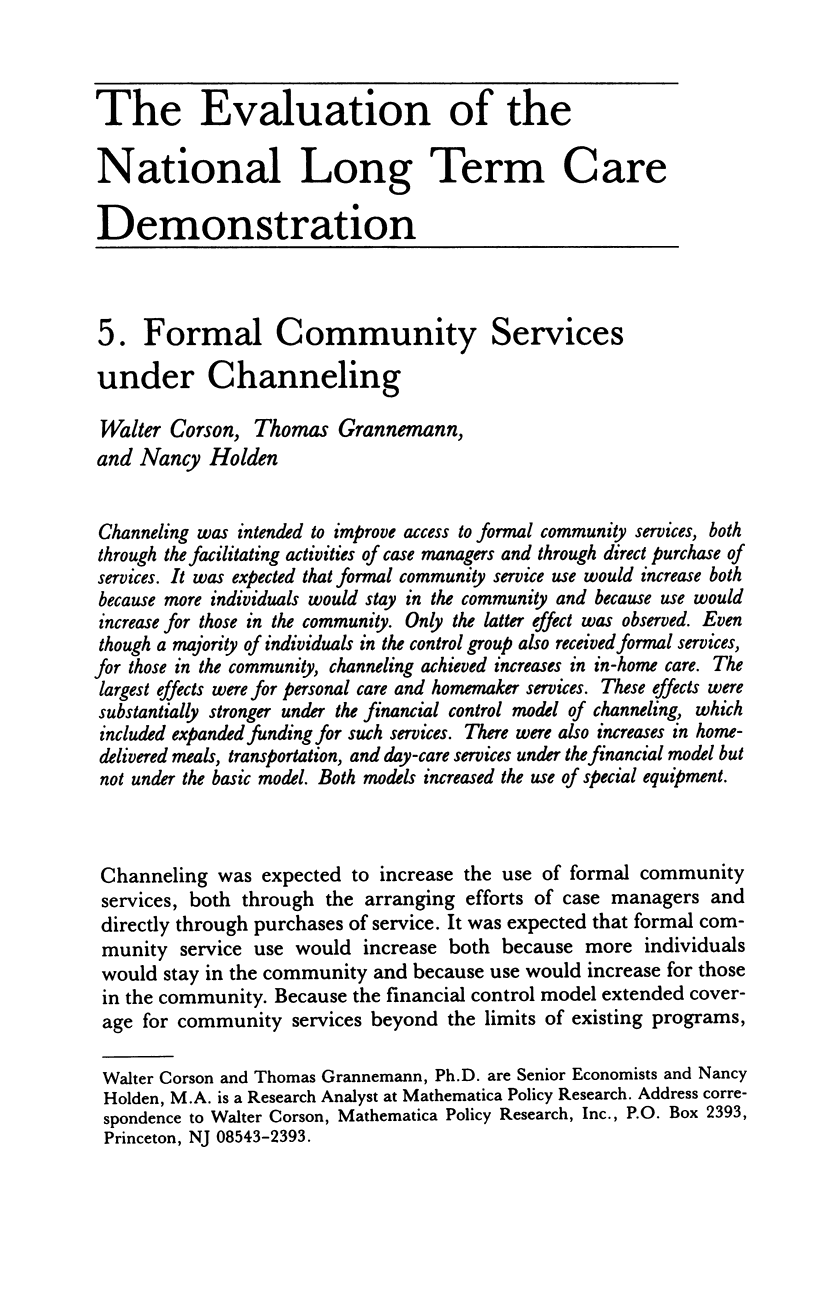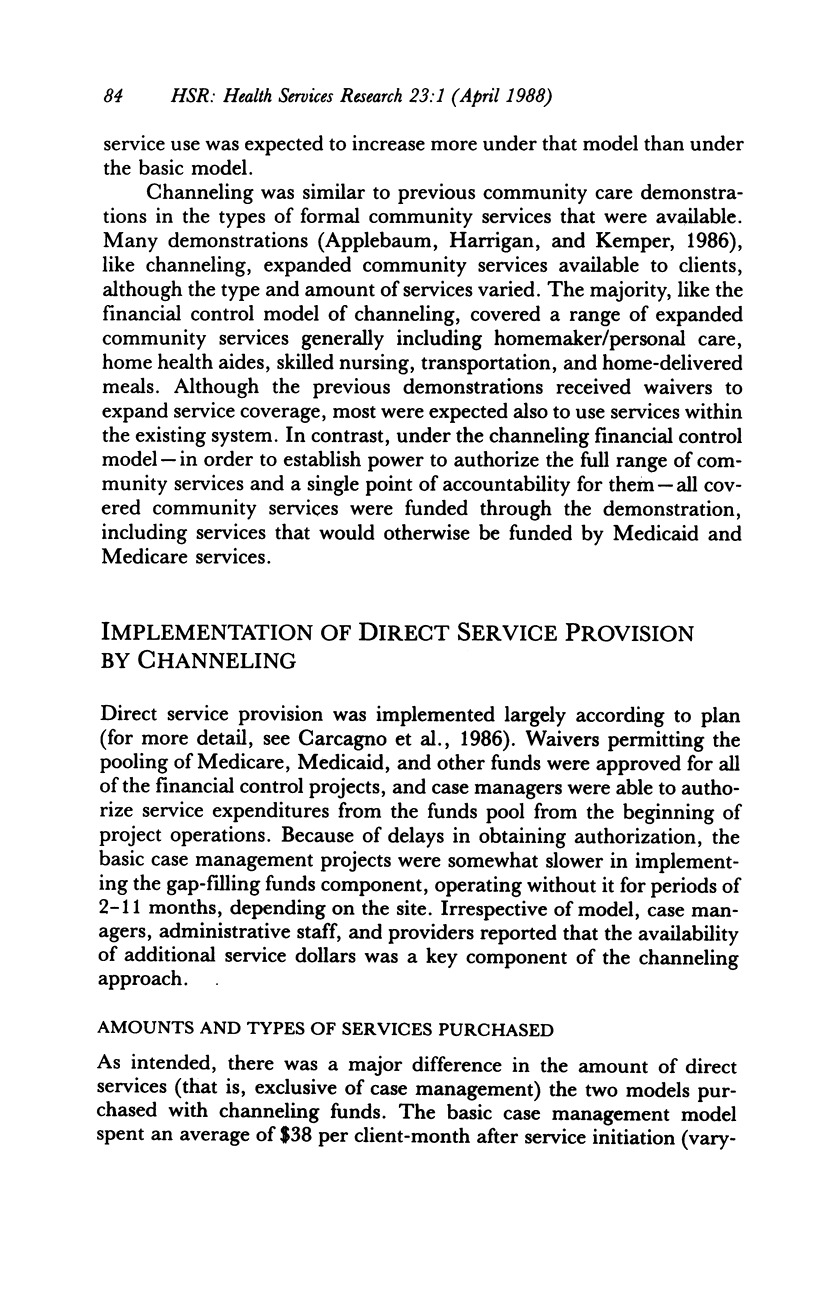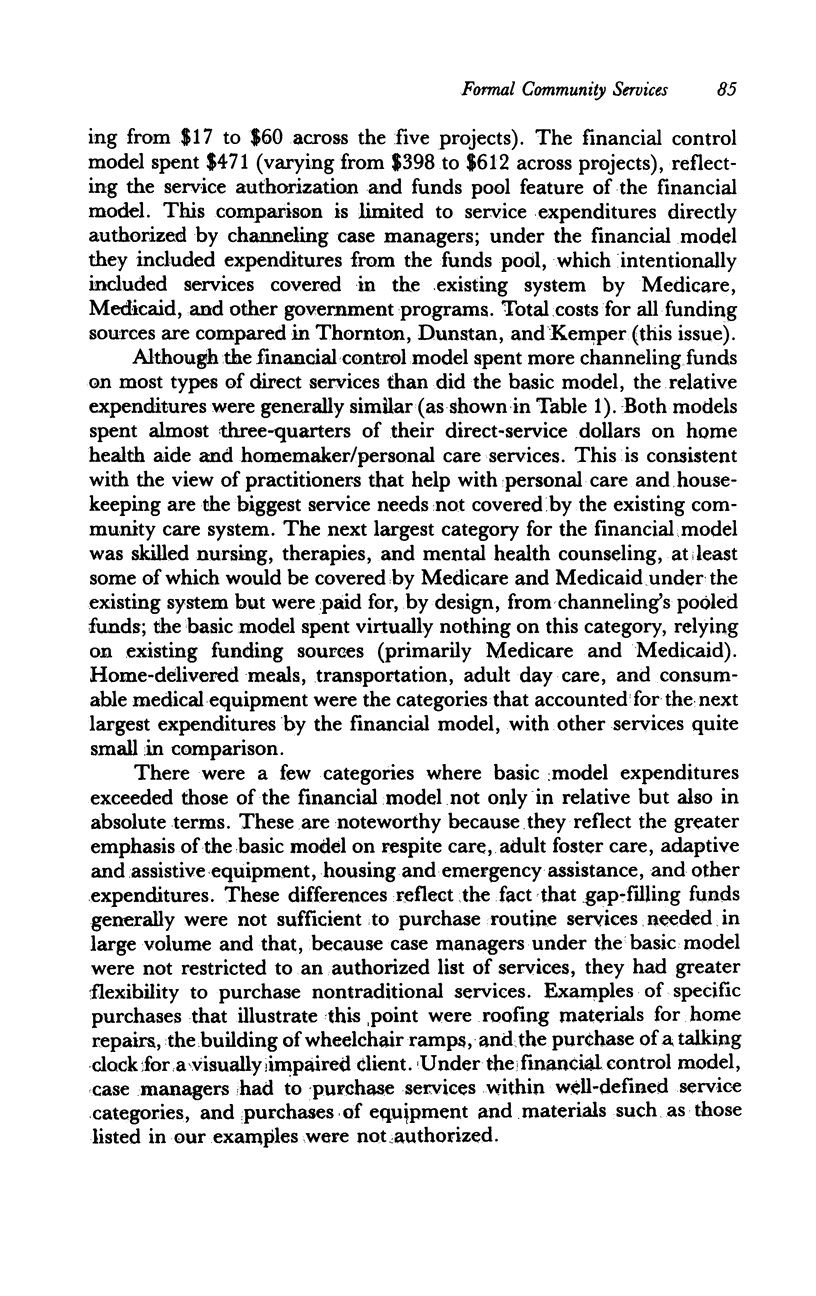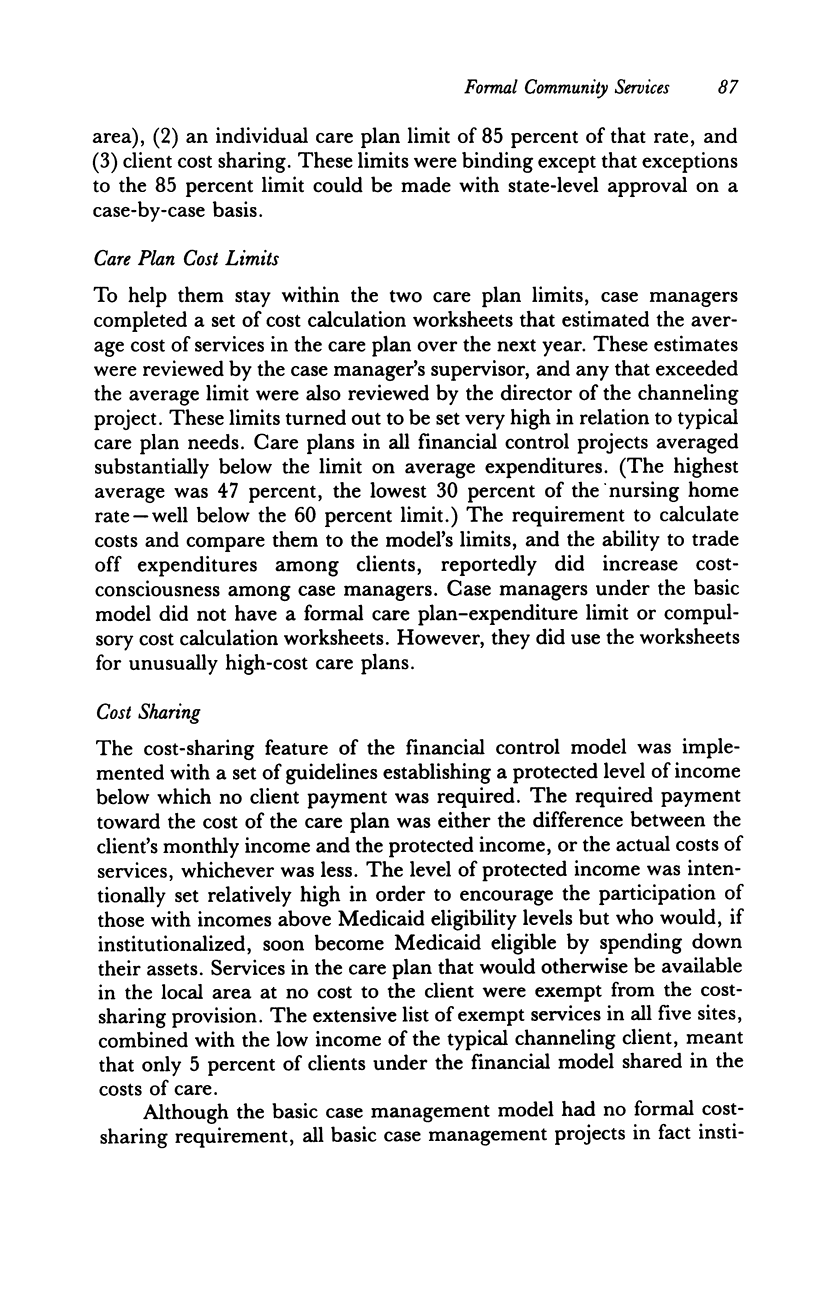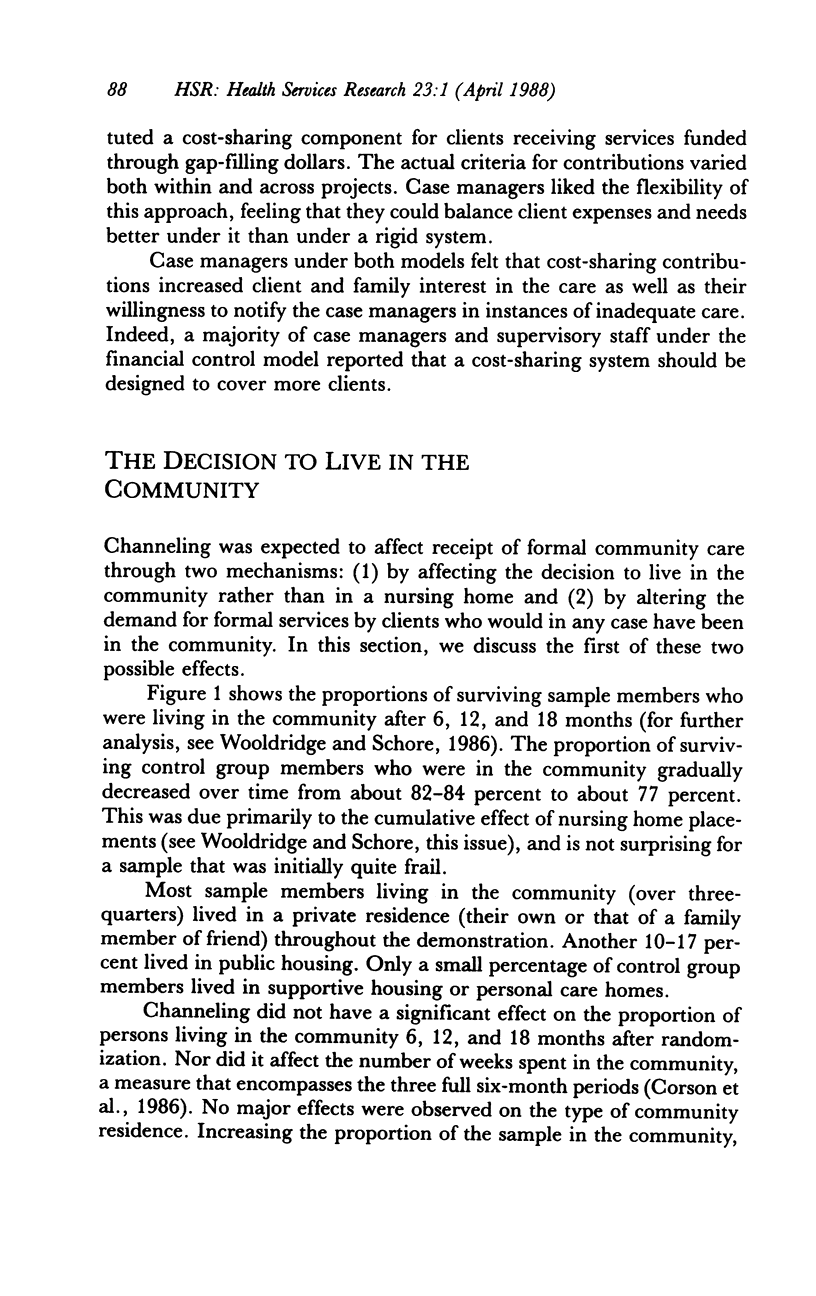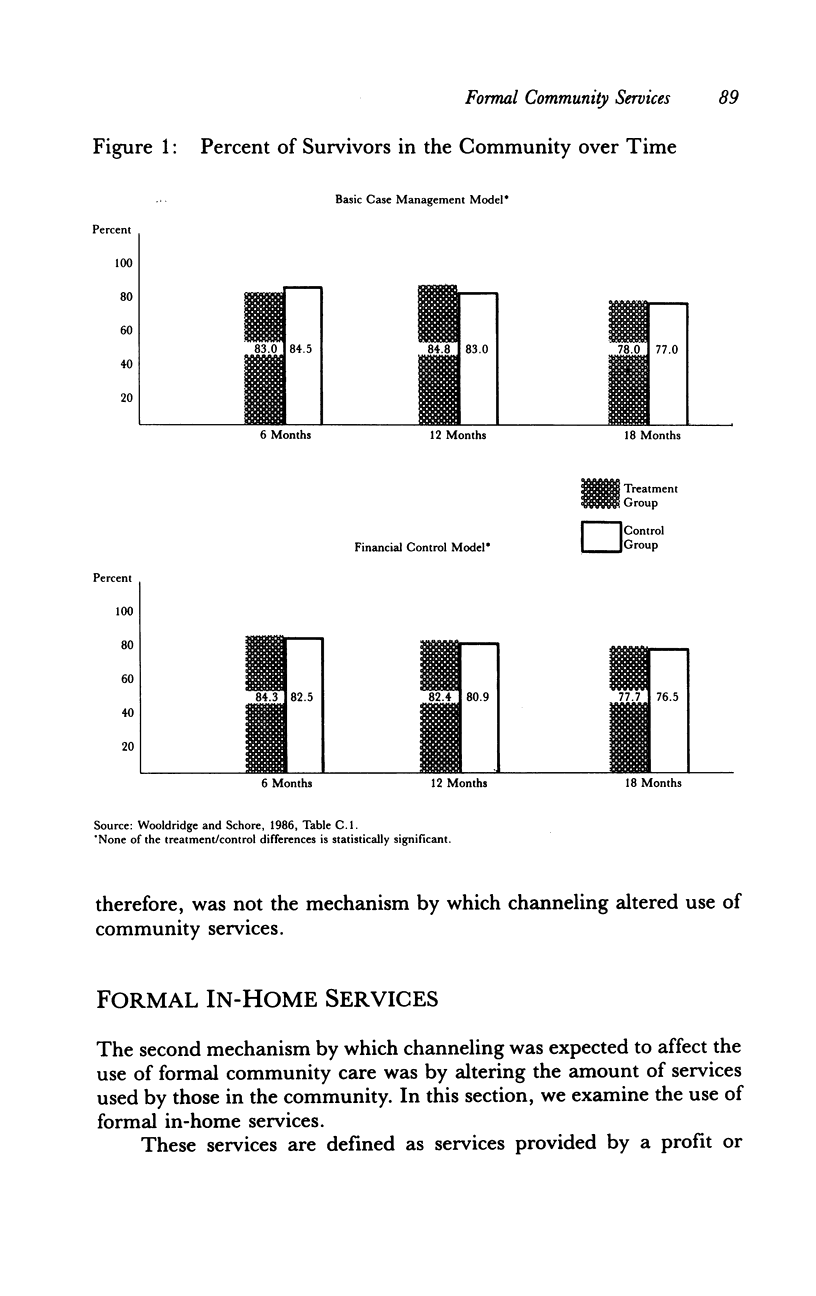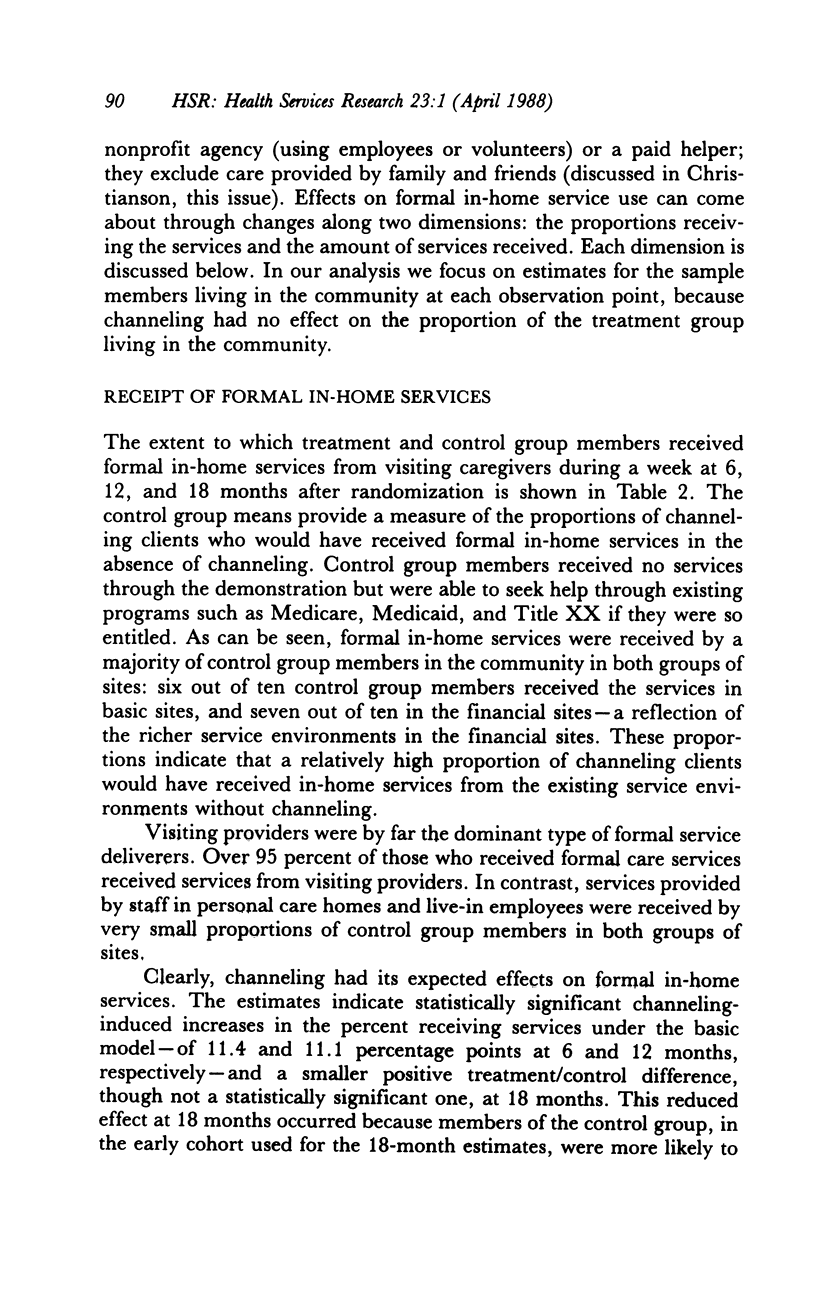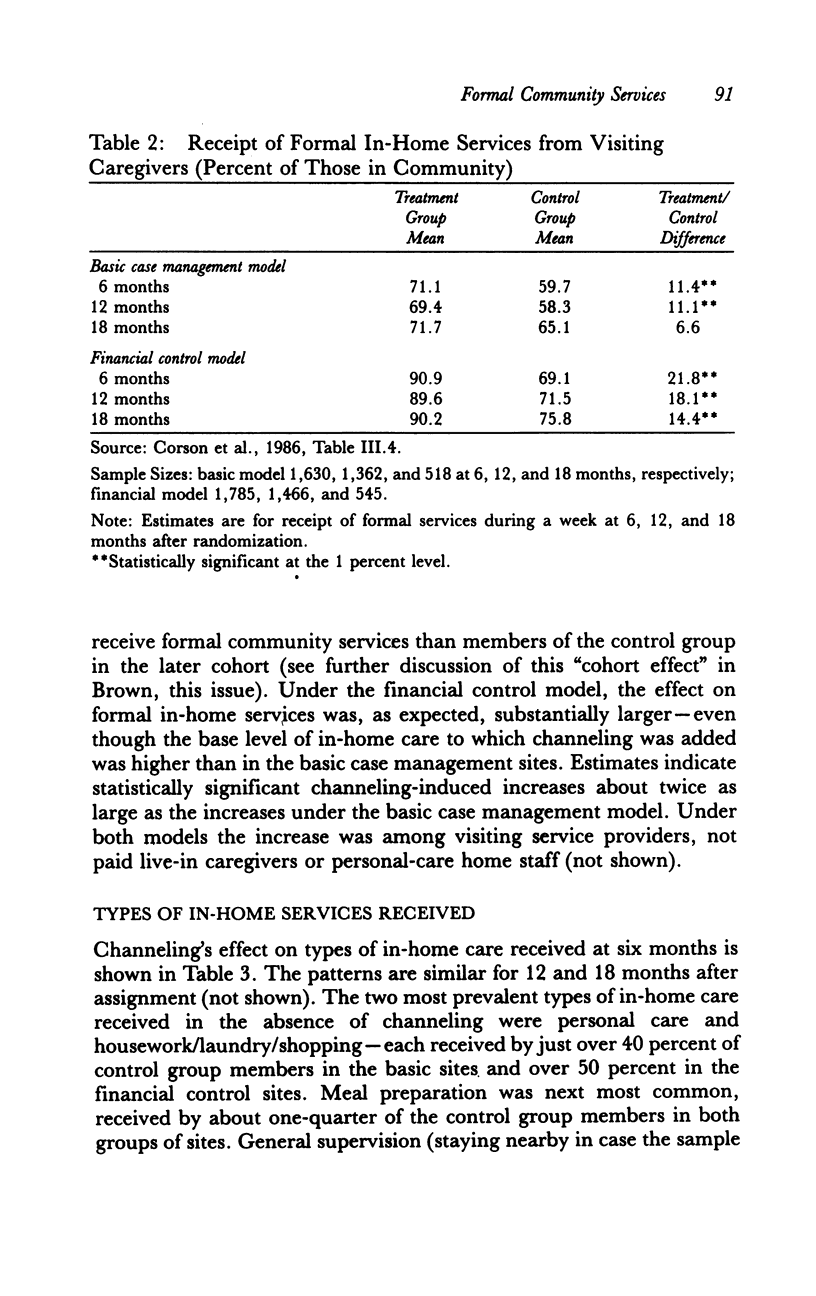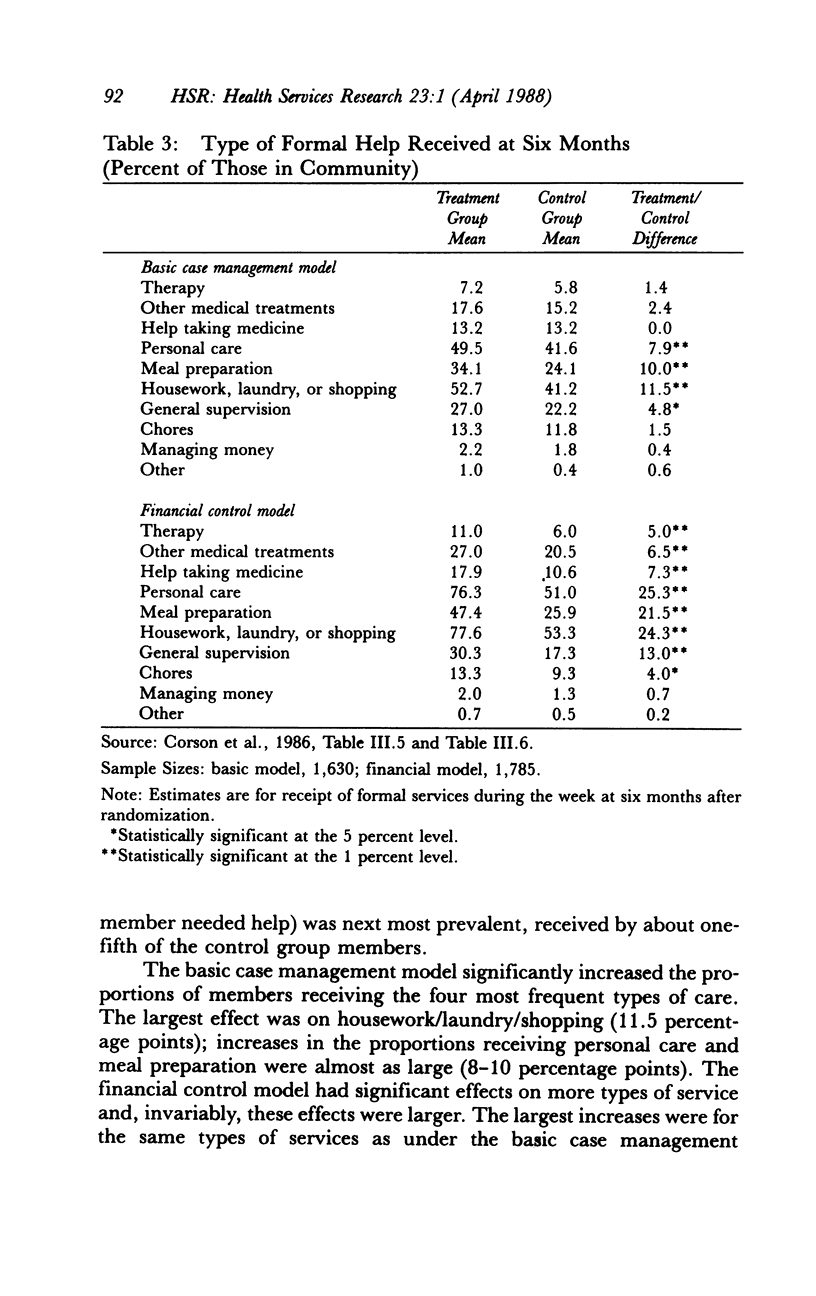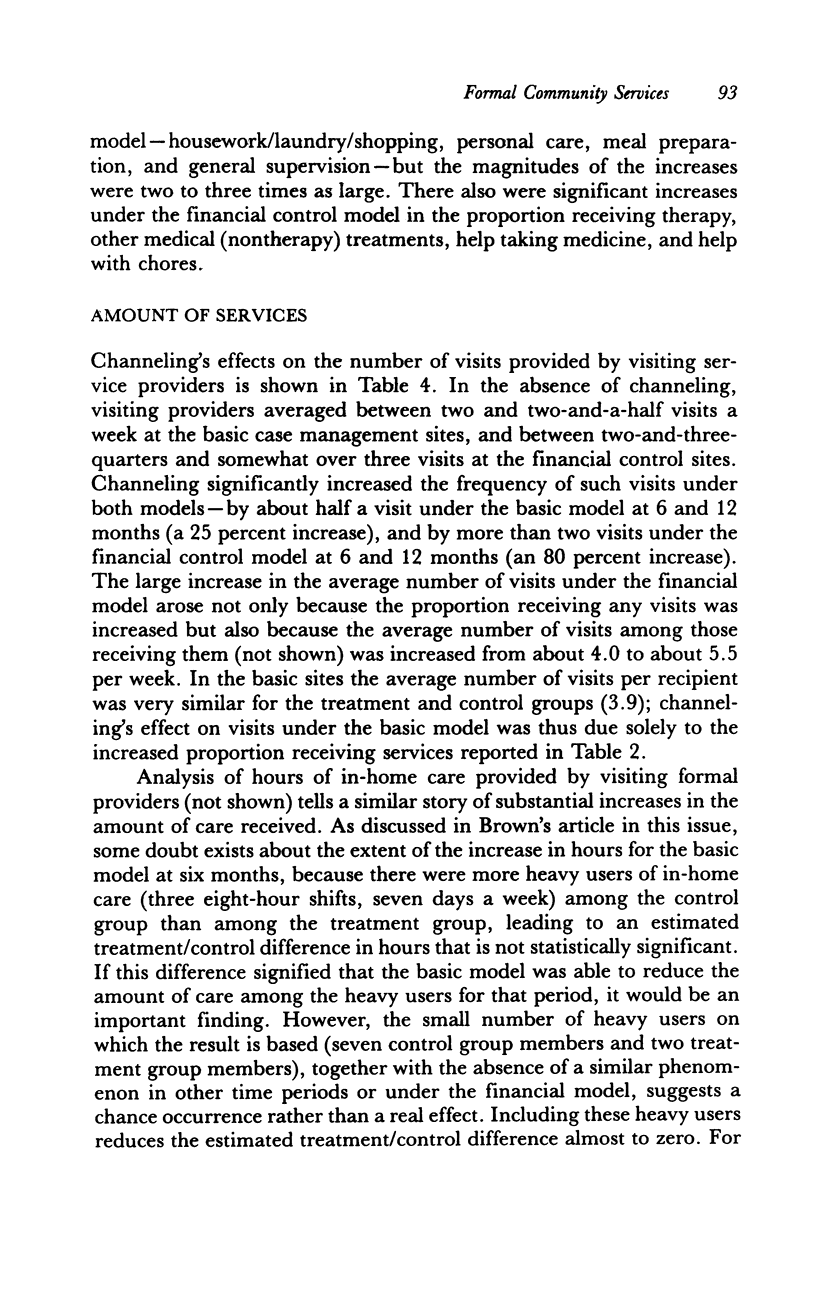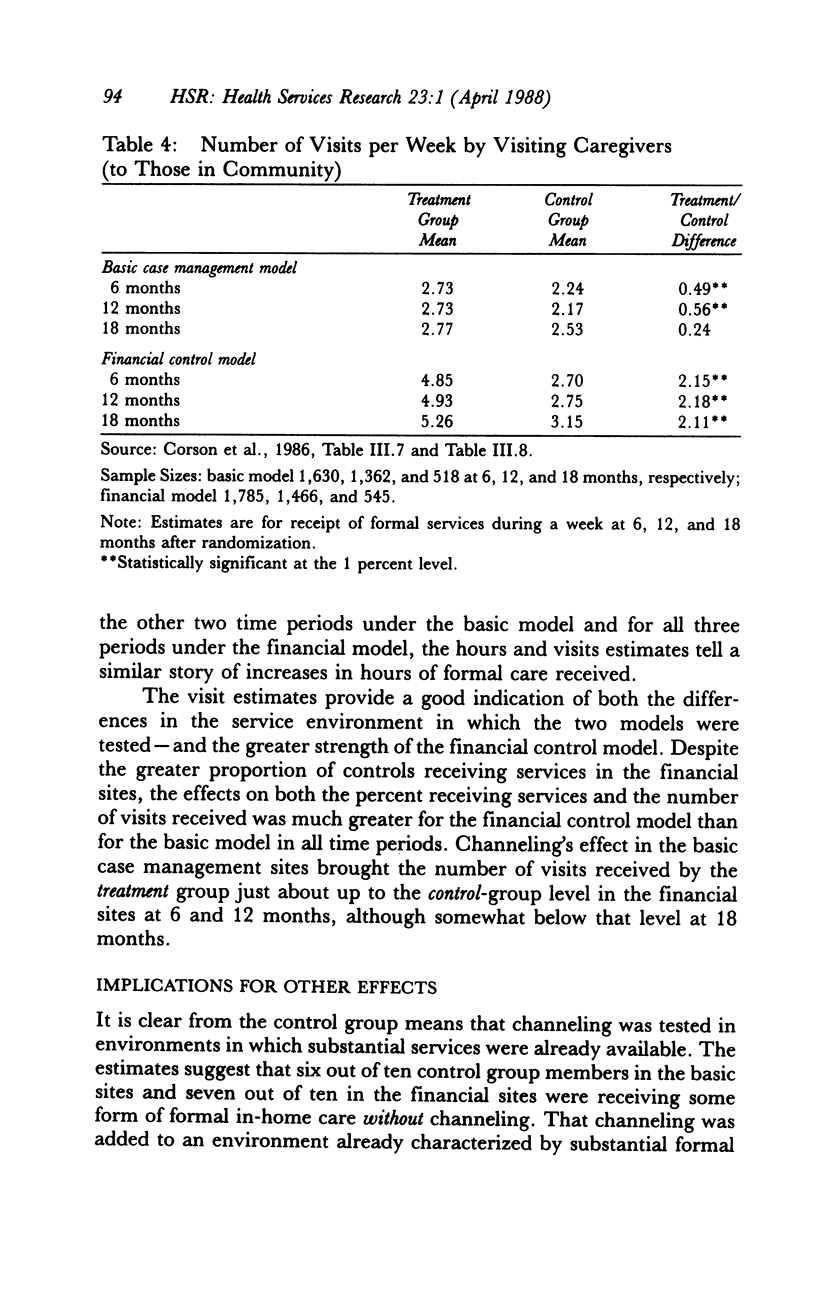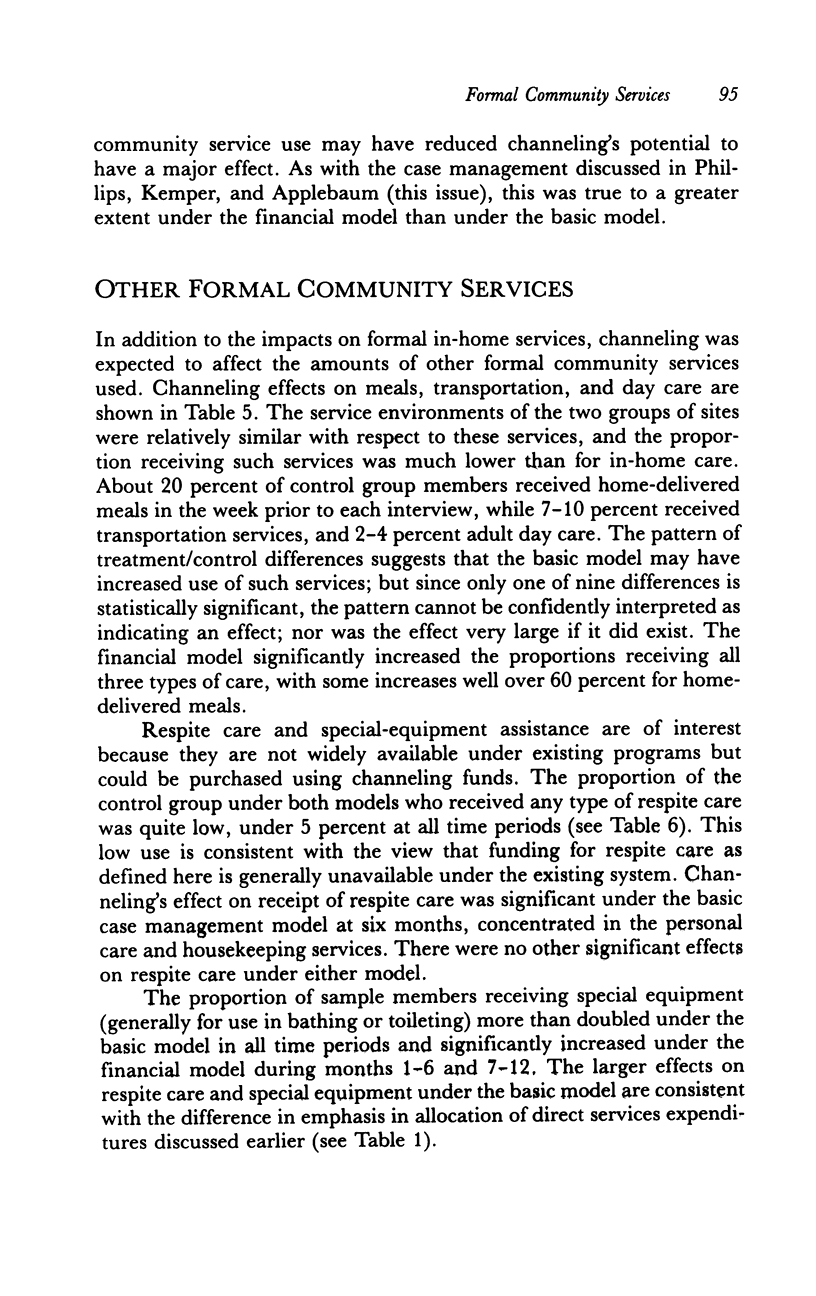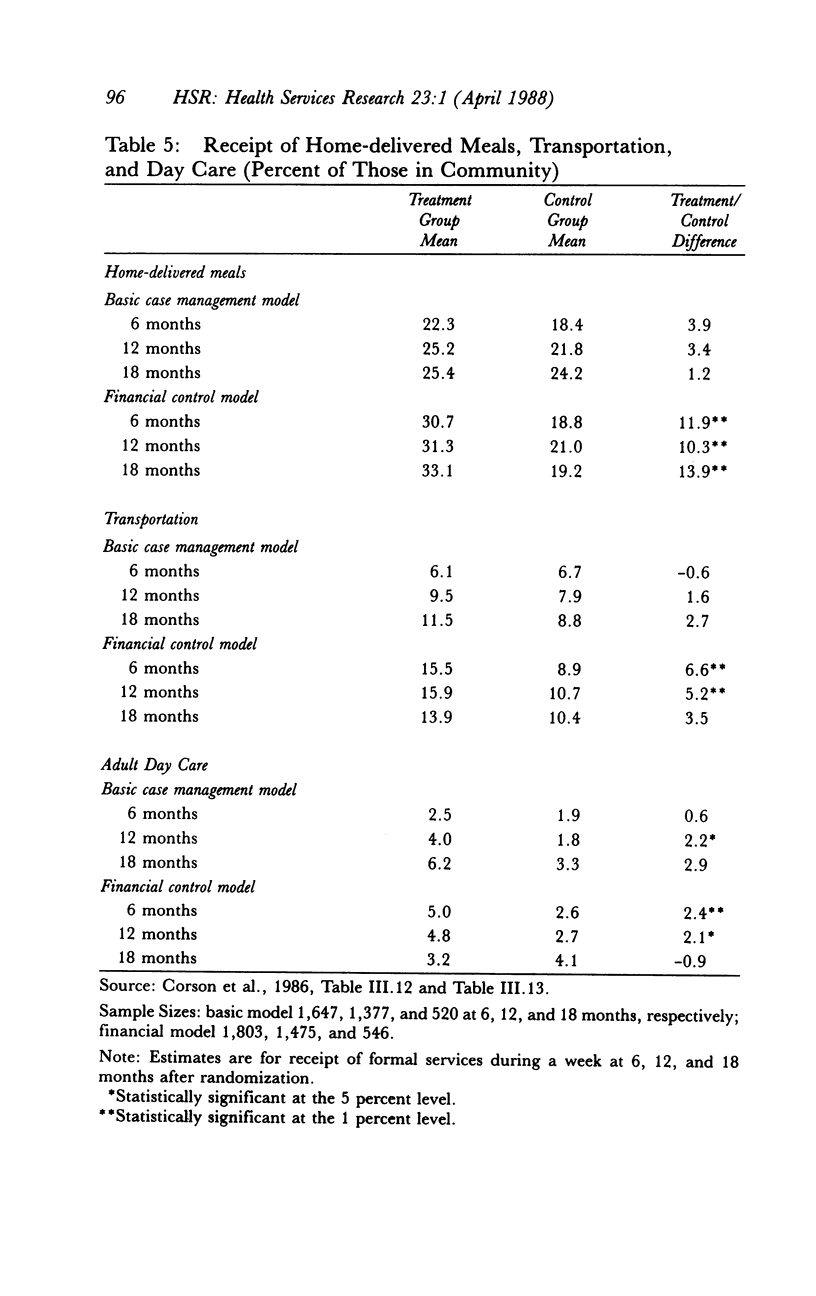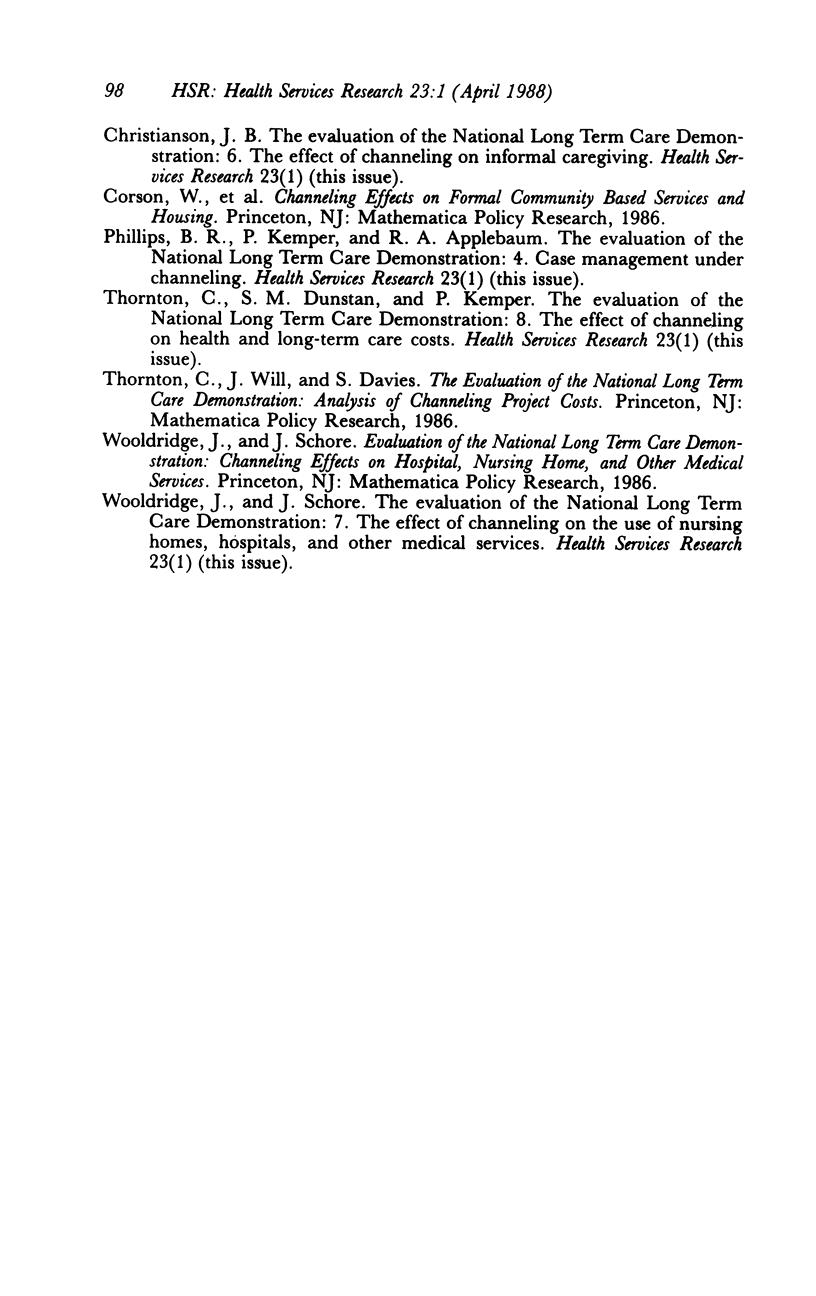Abstract
Channeling was intended to improve access to formal community services, both through the facilitating activities of case managers and through direct purchase of services. It was expected that formal community service use would increase both because more individuals would stay in the community and because use would increase for those in the community. Only the latter effect was observed. Even though a majority of individuals in the control group also received formal services, for those in the community, channeling achieved increases in in-home care. The largest effects were for personal care and homemaker services. These effects were substantially stronger under the financial control model of channeling, which included expanded funding for such services. There were also increases in home-delivered meals, transportation, and day-care services under the financial model but not under the basic model. Both models increased the use of special equipment.
Full text
PDF